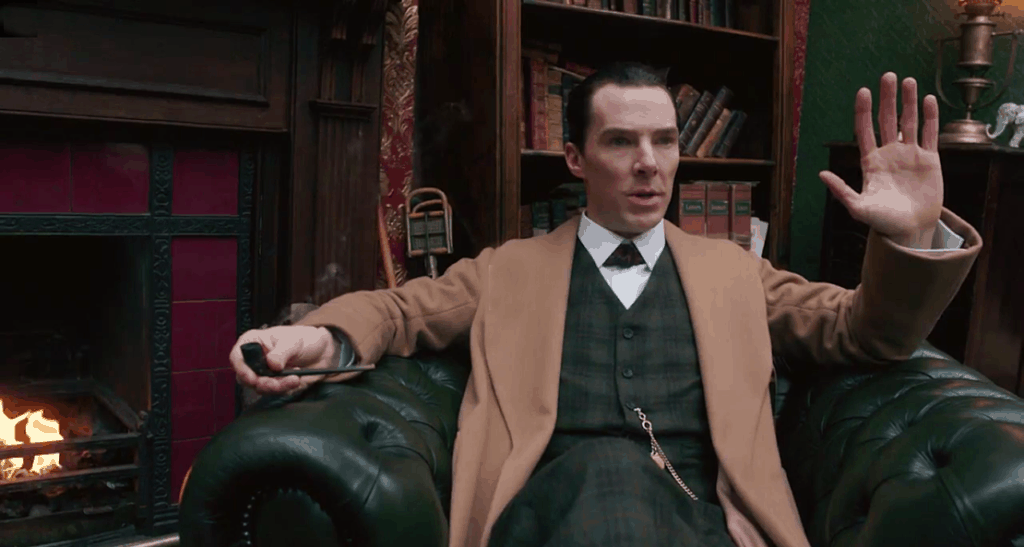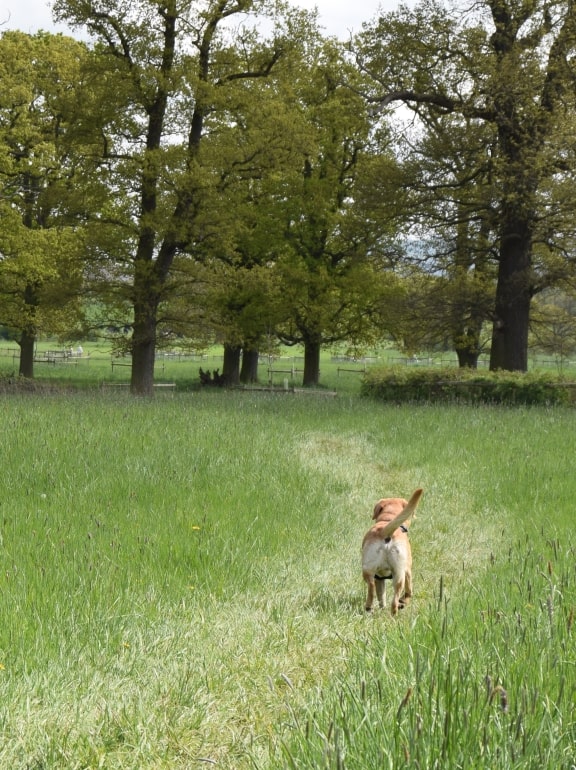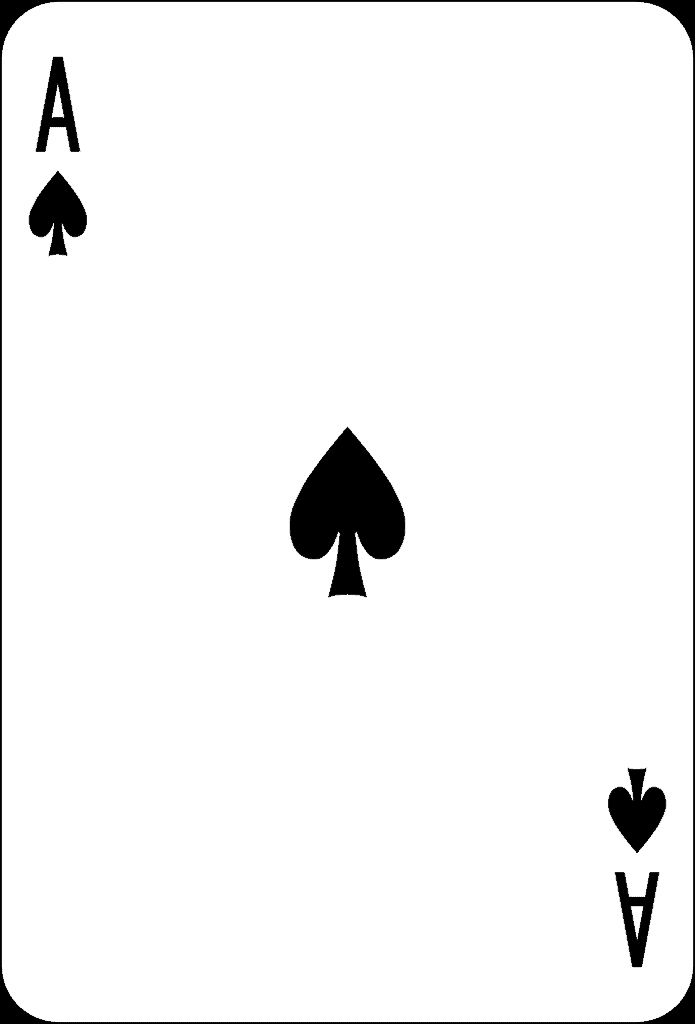Want to impress your friends and family with this truly impressive display of memory? Well, give me a few minutes of your time and I’ll tell you how to memorise a deck of cards – using your imagination.
1 Introduction
Have you ever read about, or watched, the World Memory Championships?
One of the events is the memorisation of the sequence of a deck of cards. The requirement is to scan through the deck (the memorisation phase) and then to speak the sequence to an adjudicator (the recall phase).
How long do you think that it would take you to memorise a pack?
Well, unless you are a memory athlete (yes, that is how they are referred to) with a special technique or you are a savant, the chances are that you would struggle to remember the sequence of more than around 10 cards, let alone a whole deck in less than 15 seconds.
WARNING! I’m not going to lie to you. If you are looking for a magical 5-minute method for doing this you are going to be disappointed! There is no such method. Learning this technique will take considerable time and effort on your behalf.
If, however, you are interested in learning a technique that will, with practice, enable you to memorise a deck of cards in 5 minutes then read on. Think of yourself as Rocky or The Karate Kid before you start your training.

Before you start you might want to set yourself a baseline for comparison purposes. See how many cards in sequence you can remember at the moment and how long it takes you to memorise that number.
2 The difficulty with recalling playing cards
Before we get stuck into the memorisation technique let’s take a minute to consider why it is so difficult to memorise a deck of cards.
They are boring! Boring, boring, boring.
They are random. There is no real pattern to their appearance (unless you take the time to order them by suit and rank). Our memory prefers familiar patterns.
3 The solution
As we’ve identified, there are two problems with memorising a deck of cards:
- The cards themselves are not distinct enough for our memory to work with.
- We need to be able to create a pattern to help us remember the order of the cards.
Fortunately, there are two well-established memory techniques that we can utilise to overcome these problems.
- The Person/Object system for making the cards more memorable.
- The Roman Room system for remembering the sequence.
4 The Person / Object system
For each playing card in the
Furthermore, we will be remembering our cards in pairs. To do this we take the person for the first card in the pair and the object for the second card in the pair. We then combine them into an action.
There are many variations on this theme used by various memory experts. The one that we are going to use is based around the Dominic System – a system devised by world memory champion Dominic O’Brien.
4.1 The basis of the system
The basis of the system is to change numbers into letters. For our purposes, we are looking at card numbers 1 (Ace) to 10. (We will look at the court cards separately). In the system we will assign the letters to numbers as follows:
| 1 = A | 6 = S |
| 2 = B | 7 = G |
| 3 = C | 8 = H |
| 4 = D | 9 = N |
| 5 = E | 10 = O |
We then combine these with letters designated for the suits:
| Clubs = C | Hearts = H |
| Diamonds = D | Spades = S |
So, the initials for the Nine of Spades would be NS (9=N and Spades=S).
For court cards (Jacks, Queens, and Kings) we can continue with the same basis – the initials for the Jack of Clubs become JC. Alternatively, we could make other associations. For example, all of the Jacks could be famous people called Jack.
4.2 Factors that influence our memory
At this point, it might be useful to consider some of the things that help cement our memories of certain things.
- Our senses. Can you recall the smell of a freshly opened jar of coffee? Or a crushed bulb of garlic? The taste of honey, or lemon juice? A favourite song or piece of music? The feel of a cat’s fur, or the pain of stubbing your toe on a table leg?
- Humour. Funny things are memorable. Whether it is Basil Fawlty giving his faulty (Fawlty?) car ‘a damn good thrashing’ or Sheldon’s lack of social skills in The Big Bang Theory, humour tends to be memorable.
- Exaggeration. Don’t just picture something at its normal size – imagine it minute or absolutely huge.
- Order. Our brains like things to be in an ordered sequence that they can make sense of, not something completely random.
- Bright and colourful. Rainbows are more appealing than rain-clouds.
- Sex. They say ‘sex sells’ and, when it comes to our memory, it certainly paints a picture for our brains.
- Imagination. This will play a large part in the process that we are undertaking. Your imagination will be your greatest asset.
4.3 An illustration of the system
Now, this is all a little abstract at the moment so let’s have a couple of examples to help illustrate how it works. Let’s say that the two cards we wish to remember are the Ace of Spades and the Three of Diamonds.
The letters for the Ace of Spades are A and S, and for the Three of Diamonds C and D.
So, we now need to pick a memorable person, and associated object, for each of those initials.
You can use friends and family if you like but it is usually easiest to pick famous people; TV and movie stars, sports stars, comedians, singers, adventurers, even cartoon characters.
Pick people you find it easy to visualise – if you really love them, or really hate them, so much the better.
Before I tell you my choices, take a few minutes to pick your own people with the initials AS and CD. I say this because once you read my choices you may find it more difficult to think of anybody else as these choices will keep popping into your head!
Done it?
Alright, my choices were:
AS = Arnold Schwarzenegger (object – sunglasses used in the Terminator films)


CD = Cameron Diaz (object – sequin dress, as worn in the Mask dance scene)


Now, with the order of the two cards set out above, we would take Arnie from the first card in the pair and the sequin dress from the second card in the pair. We then combine the two into an action.
Alright, we are going to combine the image of Arnie and a sequin dress! We’re going to use our imagination, some exaggeration, and some humour.
Now imagine him dancing, John Travolta-style, bright lights shining on the sequin dress, ‘Staying Alive’ pounding out of some huge speakers.
And there you have it. A memorable image combining the Ace of Spades and the Three of Diamonds.
4.4 Building your own pack of cards
OK, this is probably the toughest part of the whole system.
You now need to think of people and objects to associate with all 52 of the playing cards.
Draw up a grid with the numbers 1 to 10, plus Jack, Queen, and King going down the page and the card suits Clubs, Diamonds, Hearts, and Spades going across the top. Note down the letter combinations for the 1 to 10 items.
Some of these will come to you quite easily. Others may take a while.
The ones that come to you easily will normally be the ones that you will find easiest to work with going forward. The ones that you have to work at may take a little more effort.
Once you reach a sticking point don’t be afraid to brainstorm with friends, family, or Google.
There are no limits as to what you can pick. Real or fictional. Good or bad. Dead or alive. Whatever works for you.
If you are stuck feel free to leave a Comment below asking for suggestions.
5 The Roman Room system
This system has a number of different names. You may hear it referred to as:
- The Roman Room system
- The Method of Loci
- The Journey System
- The Memory Palace
The system works by combining the information to be memorised with information about an individual’s environment that is already well known.
The well-known environment is typically a familiar journey or building and the method is believed to have been developed in ancient Roman times (hence the various names used above).
You will recall from the Factors that influence our memory (link!) section above that our brains like order. The Roman Room system capitalises on this.
You may also recall that the fictional detective Sherlock Holmes was a great advocate of the memory palace.

Picture the rooms in your own home. Think of their location, size, appearance, purpose, items contained within them – the more detail, the better.
As we are remembering the cards in pairs, and there are 52 cards in a deck, we need to come up with 26 different locations.
Now, unless you are fortunate enough to own a home with that many rooms in it, we are going to need to be a little creative!
If you have a garden or gardens then include those. Likewise a garage for your car, a garden shed, patio areas, bathrooms, cupboards under the stairs, hallways, stairs, landings, wardrobes, showers, loft space.
It will help if you have a piece of paper to write down the locations in a list running from 1 to 26. You may need to re-jig it a few times to get to the final list.
Now, pick a starting point and imagine the route that you would take between the various locations. It should be a logical route that mirrors the route that you would take in real life (no magically vanishing in one location and then re-appearing in one that is not connected to it!).
6 A quick re-cap
Let’s remind ourselves of what we have covered so far.
- Playing cards are difficult to remember (let alone remembering a whole deck in order)
- There are memory techniques that we can use to overcome this difficulty
- The Dominic System helps us to distinguish the playing cards (can you remember the images for the Ace of Spades and the Three of Diamonds?)
- Knowing what factors influence memory enables us to create vivid images
- The Roman Room system helps us recall the cards in order
OK, so now its time to put what we’ve learned to good use.
7 Let’s memorise some cards!
So, you’ve created your Dominic System deck of cards and your Roman Room journey. You are ready to go!
Well, nearly ready. There is a little caveat that I should add at this point.
For many people, myself included, you may find that the system is so powerful that when you first start out it can be very difficult to forget a particular sequence of cards in order to begin memorising the next sequence.
So, don’t try to run before you can walk. I suggest that you limit yourself to one sequence per day.
Grab your deck of cards and give it a good shuffle – it’s time to memorise a deck of cards by using your imagination.
7.1 The approach
- Slowly, go through the deck two cards at a time.
- Recall your association for the first card (the person).
- And the second card (the object).
- Recall the first location for your Roman Rooms journey.
- Now, remembering the memory influencing factors that we considered earlier, combine the card pair with the location.
- Make sure that the image is vivid and clear.
- Move on to the next pair and next location. Form the next image.
- Keep going until you have gone through the pack.
- Give yourself a few seconds and then begin to run through the journey in your mind, visualising the created card pair images at each location.
- If there are any holes in your recall you can have another run through if you like. Really focus on those person/object/location combinations.
- Time to test yourself!!!
- Hold the deck in your hands and say out loud the name of the playing card before turning it over. Then the next, and the next and so on.
- If you get
stuck move on (it is likely that you will have to skip 2 cards as we are memorising in pairs) until you reach the end of the deck.
7.2 Time to evaluate
How many did you get?
| 52 |
| Well done. You’ve clearly got an excellent grasp of the techniques involved. |
| 40 to 50 |
| Pretty good. You have a good grasp of the techniques but just need more practice. |
| Less than 40 |
| OK, something needs a little more work. Where did you struggle? |
7.3 Strengthening the associations – the cards
If you couldn’t recall the person/object detail for the cards then you need to put some more work in here before trying to memorise any more decks.
You could make a recording of your associations on your mobile phone and play it back to yourself on your commute to and from work, or whatever journey you might be making.
You could pick a card (or cards) of the day. Throughout the day, whenever you have a spare moment, think of the card of the day. In the bathroom when you wake up. Having breakfast. Getting dressed. Going to work. Having lunch. Taking a walk. Having coffee.
Another approach you could use is what I call the ‘I’ve got your number!’ approach. Whenever you see a combination of numbers think about what they represent in terms of your Dominic System cards.
Just seen the number 16 on the front of a bus? What does that represent? Come on, you know this one – 1 is A and 6 is S. The Ace of Spades. Who is the person and what is the object?
You can use it on pretty much anything with numbers; house numbers, car registration numbers, phone numbers, the amount payable the next time you but something.
Likewise, anytime that you see one of your people or object associations try to recall the card in question. Just seen Cameron Diaz on the TV – what card should you be thinking of?
7.4 Strengthening the associations – the locations
Did you struggle to remember the sequence of rooms?
If so, then again you just need to put in the time committing the journey to memory. Is there one particular location that you struggle with? Try to make it more memorable link it to the previous location.
Let’s say that at the end of your hallway, which has a wooden floor, is your kitchen. It is the kitchen that you are missing in the sequence.
Imagine that the wooden floor is incredibly SLIPPERY. Not just a little bit – this floor is so slippery that you struggle to remain upright, even wearing trainers with really grippy soles. When you are in the hallway you resemble one of those cartoon characters with their feet continuously slipping out from underneath them, arms windmilling around as they try to keep their balance.
Now picture one of the major appliances in the kitchen, let’s say the cooker. This cooker is huge and has come to life – the door keeps opening and closing as if it is some sort of giant mouth trying to devour you. And the HEAT! It’s incredible – the cooker has taken on dragon-like attributes and is breathing fire each time that the door/mouth swings open.
So, what happens when you enter the hallway? You slip and you slide. Whatever you do to try and stop yourself has no impact. You are sliding, uncontrollably, towards the kitchen … and the Devil’s own cooker intent on incinerating you!
The hallway and the kitchen are now inextricably linked. I think it pretty unlikely that you would forget the connection again.
7.5 Strengthening the associations – the combinations
If you’ve mastered the Dominic System and the Roman Rooms system and are still struggling then it’s the combination of the two that you are struggling with.
I sympathise. I struggled with this for a while too.
When we are kids our imagination is, frankly, AWESOME. We have no trouble thinking of the most incredible things. But as we get older we tend to use our imagination less. And, as with many things, it can be a case of ‘use it or lose it’!
The good news is that when you start using it again you will soon get back into the swing of things. Can you recall the two locations that we were linking together in the section above?
Slippery floor? Cooker from Hell? That’s it, the hallway and the kitchen.
Well, its just a matter of using the same approach but incorporating the cards.
As previously, I don’t want to spoil any card associations that you may make so I’ll stick with the examples that we’ve already used. So, we’ll swap the cards around such that it’s the Three of Diamonds first and then the Ace of Spades. And the location that we want is the kitchen.
Do you remember the person for the Three of Diamonds and the object for the Ace of Spades?
That’s it, Cameron Diaz and the Terminator sunglasses.
So, let’s start building that image.
Picture Cameron in the kitchen. What clothes is she wearing? Is she wearing any clothes?! What hairstyle does she have? Is she normal size, or miniaturised, or super-sized? Is she wearing perfume (is it appealing or does it smell like Eau De Dog Poo)? Is she scared (remember where she is … with the cooker from Hell!) or is she confident?
Picture the sunglasses. Is Cameron wearing them in the usual manner (possibly to protect her from the fire erupting from the cooker)? Or are they flipped up on her head because she’s indoors? Or tucked into her top? Do they provide some sort of super powers that provide protection from the cooker?
Picture the kitchen. We know that there is the fire-breathing cooker from Hell. How are Cameron and the sunglasses linked with it?
Putting it all together …
The kitchen cooker is as deranged as ever. Each time
Cameron is in a bikini and has applied factor 6000 sunscreen! The heat in the kitchen doesn’t bother her one jot. In one hand she is holding a cocktail (a Snowball, just to add to the Hell combination). In the other hand she is holding …
The sunglasses. However, she is holding them by the darkened lenses with the arms being held towards the fire-breathing cooker because … there is a sausage on each arm and she is barbecuing them using the fire from the cooker!
The normal and
8 Improving your time
Once you get to the stage where you are confident that you will be able to memorise a deck of cards each time that you attempt it, its time to move on to the final stage – timed memorisations.
Start to keep a record of how long it takes you to memorise a deck of cards. The time starts when you pick up the deck and ends when you put it down again. It doesn’t include the actual recall part of the task.
You can do the timing with your watch, your mobile phone, or using Excel and some VBA.
Initially, aim to get under 15 minutes. Then 10 minutes. Then 5 minutes.
My best time is 3 minutes 52 seconds.
At the time of writing the World Record time is 12.74 seconds!
Post your times in the Comments below – let’s see how you progress and how you compare with others.
Then I’m done done on to the next one
‘All my life’ by the Foo Fighters
Done done and I’m on to the next one
Done done and I’m on to the next one
Done done and I’m on to the next one
Done done and I’m on to the next one
Done done and I’m on to the next one
Done done and I’m on to the next one
Done I’m done and on to the next
9 Acknowledgements
10 The End

I hope that you’ve enjoyed this post.
Feel free to navigate around the site to see if there is anything else that may be of interest to you.
If you liked this post please share it. Thank you 🙂
If you’d like a heads-up when the next post is issued sign-up to the Richie’s Room Newsletter.
And, if you’d like to add a comment that would be great too – you can do that below.



Wow this is super interesting! There is so much useful information in this post thanks for sharing!
Amber – The Unpredicted Page
Hi Amber. It’s fascinating how memory works, isn’t it? Don’t forget to come back and post your time!
Wow…. It’s really amazing…
I’ve watched Sherlock Holmes series and I love that Memory palace method….
Thank you for sharing 😇
JENISH
Hey Jenish. Glad that you enjoyed it. If you decide to give this a try, do come back and post your time 🙂
Wow great post! I never thought of utilizing memory tricks in card games, thank you for sharing!
Hey Aislinn. Glad you enjoyed the post.
I could probably try and improve my memory! Great post!
Hey Molly, thanks for the comment. Yes, I think many of us have scope for improvement 🙂
I’ve always found memory so interesting and reading more about how it works was fascinating! I’m not sure I’m up to memorising a deck of cards yet but may give it a go!
Thanks for your comment, Katie. Go on, go for it!
This could be a great little party trick! I’ve always been intrigued as to how you memorize cards. Thank you for such an in depth article – I look forward to giving it a go.
Have a lovely day, Sara.
Hi Sara. It is a fantastic party trick – I’ve even had people check the pack to see if it had some sort of braille on it that was helping me! If you do give it a go, come back and let me know how you get on.
This is so interesting! I have a friend who’s learning magic tricks and I think he’d love this – will forward it to him, thanks! =)
Hi Kate. Glad you enjoyed it. What amazes me is that we all have the capacity to do this – its just a matter of knowing how.
Years ago I attended a sales seminar on memory tricks and this was exactly what the speaker told us to do. I have to confess it’s also been years since I tried to memorise anything like numbers or people but I do know that it works – thank you for the reminder and trip down memory lane! Lisa
Hi Lisa. Snap! I was on a work-related course and they demonstrated some memory techniques and I was just amazed at what could be done – by anybody!
I learned a version of this memorization technique in a college psychology class, and I can still remember the example she gave to associate a grocery list with objects around your living room. Really interesting.
Hi Laura, thanks for your comment. Yes, it’s very effective isn’t it?
This was really interesting to learn about! I’m not sure how good I’d be at it but I’ll have to give it a go!
Thanks for your comment, Faye. Go on, give it a go 🙂
This is sooo cool. I was obsessed with Rain Man when I was little!
Rosie
Thanks Rosie. So, are you going to take up the challenge? 😉
I get the concept of allocating the cards names and that, provided that you can actually remember those names. I’m terrible at remembering names. But how on earth do they turn that into a 15 second ability? Are they doing it subconsciously?
Yes, I think that’s it. It’s incredible, isn’t it?
My best time works out at a little over 4 seconds per card or, more accurately, 8-9 seconds per pair of cards (because that is how I recall them). So, by the time that I’ve finished with my 3rd and 4th cards … they’ve finished!! The human brain is a marvellous thing, it only needs to catch the briefest glimpse of something and it will recognise it. And these top-level competitors spend a lot of time fixing their associations into their memory.
When I look at the Ace of Spades and the 3 of diamonds I actually consciously think “Ah yes, the Ace of Spades is first so that means that I want the person rather than the object and that person is Arnie. And the 3 of diamonds second, that means that I want the object rather than the person so that’s the sequin dress from The Mask.” And then I have to think of the location for Arnie wearing the dress. Now, of course, that all happens much quicker than it takes me to type it but for the experts, it happens in an instant.
You could always give it a go – see how close you can get to those times and that would give you a greater understanding of how it works.